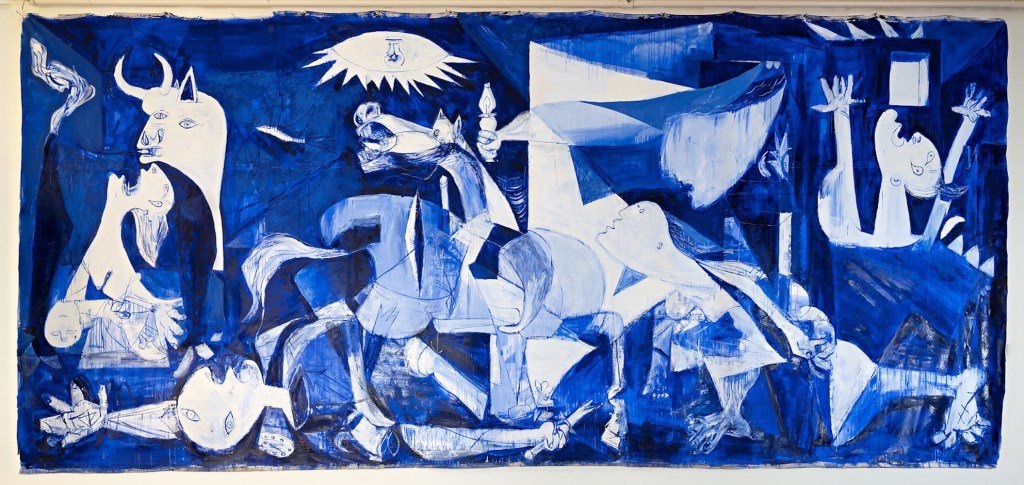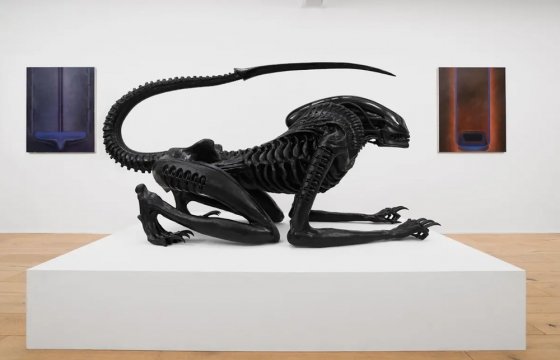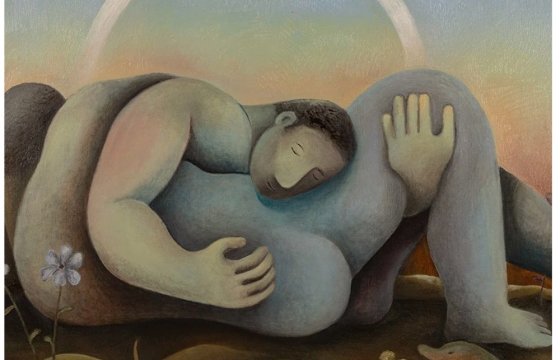

I was full of questions when I went to see the exhibition Gideon Bok: Gaza and Other Paintings at the Interchurch Center. Bok had applied paint differently in each disparate body of work that I had seen. I wondered how they all fit together, or if they even needed to. My interest was further piqued when I read that the show would include “Gaza” (2025), his restating of Pablo Picasso’s celebrated antiwar painting “Guernica” (1937) in response to Israel’s ongoing assault on Palestine. This was a side of Bok — who has spent years depicting views of his studios — that I had not encountered before.
Along with paintings of studios that Bok has worked in between 2004 and the present, the exhibition includes two pieces titled “Gaza” (one of which is the same size as “Guernica”), his version of Artemisia Gentileschi’s “Judith and Her Maidservant with the Head of Holofernes” (1624), and several paintings of record covers — one of his many preoccupations.

What immediately struck me about Bok’s studio paintings was his attention to detail and mimetic facility, along with their jewel-like palettes — but would that work when recreating Picasso’s monumental black, white, and gray “Guernica”? With “Gaza” Bok adapted to the subject, rather than the other way around.
Seeing the large version of “Gaza” made me admire Bok for recognizing his complicity in the act of making art. Displayed on the marble wall that greets visitors entering the Interchurch Center, “Gaza” replicates “Guernica” on an unstretched canvas rendered in blue and white, the colors of Israel’s flag. The colors link the sustained, systematic aerial bombing of civilians, mostly women and children, living in the Basque town of Guernica in 1937 to Israel’s current genocide in Gaza. To test new tactics, the German and Italian air forces directed their attacks in Guernica toward infrastructures, including hospitals and firefighting units.
By including “Gaza” with his other works, Bok pushes us to reconsider the relationship between the studio artist and activist. Do you have to be one or the other? His modestly sized response to Gentileschi’s painting underscores his concern with violence and resistance.

The studio paintings are animated by tension between the three-dimensionality of the room’s receding space and the two-dimensionality of many objects in it, such as paintings on the far wall. Bok torques this tension by using bright, imagined colors within a naturalist setting, and depicting things as if seen from different angles — the eyes are never still. In “Fading Mom” (2020), Bok similarly shows his mother’s head in different positions, recording the passage of time. Painting cannot stop time; it can only acknowledge a constantly changing world.
A third group of works depicts album covers, from Bob Dylan and David Bowie to Sparklehorse and PJ Harvey. All are painted on square panels and show the record tilting diagonally in space, as if it is lying on a table or floor.
Together, the three groups of paintings reveal Bok passionately enshrining what matters in his life. With the “Gaza” works, he broadened the range of experience to which he responds. As I think about his studio images, which seem closed off to the world, I am interested to see where Bok will go next.

Gideon Bok: Gaza and Other Paintings continues at the Interchurch Center (475 Riverside Drive, Morningside Heights, Manhattan) through November 14. The exhibition was curated by Steven Harvey with Jennifer Roberts.


